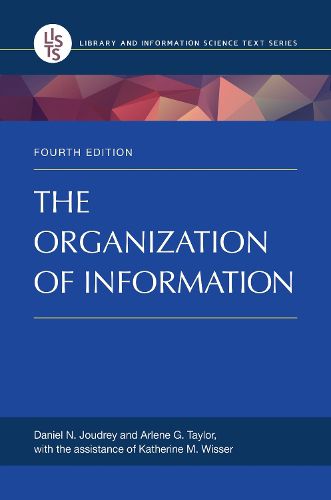Readings Newsletter
Become a Readings Member to make your shopping experience even easier.
Sign in or sign up for free!
You’re not far away from qualifying for FREE standard shipping within Australia
You’ve qualified for FREE standard shipping within Australia
The cart is loading…






This fourth edition provides an updated look at information organization, featuring coverage of the Semantic Web, linked data, and EAC-CPF; new metadata models such as IFLA-LRM and RiC; and new perspectives on RDA and its implementation.
This latest edition of The Organization of Information is a key resource for anyone in the beginning stages of their LIS career as well as longstanding professionals and paraprofessionals seeking accurate, clear, and up-to-date guidance on information organization activities across the discipline. The book begins with a historical look at information organization methods, covering libraries, archives, museums, and online settings. It then addresses the types of retrieval tools used throughout the discipline-catalogs, finding aids, indexes, bibliographies, and search engines-before describing the functionality of systems, explaining the basic principles of system design, and defining how they affect information organization. The principles and functionality of metadata is next, with coverage of the types, functions, tools, and models (particularly FRBR, IFLA-LRM, RDF) and how encoding works for use and sharing-for example, MARC, XML schemas, and linked data approaches.
The latter portion of the resource describes specific activities related to the creation of metadata for resources. These chapters offer an overview of the major issues, challenges, and standards used in the information professions, addressing topics such as resource description (including standards found in RDA, DACS, and CCO), access points, authority control, subject analysis, controlled vocabularies-notably LCSH, MeSH, Sears, and AAT-and categorization systems such as DDC and LCC.
Provides an essential overview of information organization-a central activity in library and information science-that describes approaches to organizing in libraries, archives, museums, online settings, indexing services, and other environments
Newly revised and updated to reflect changes in cataloging rules, address new standards, and introduce upcoming changes
Expands the scope of content relating to information organization in non-library settings
Features vocabulary and acronym lists at the end of each chapter to help readers stay abreast of new terminology
$9.00 standard shipping within Australia
FREE standard shipping within Australia for orders over $100.00
Express & International shipping calculated at checkout
This fourth edition provides an updated look at information organization, featuring coverage of the Semantic Web, linked data, and EAC-CPF; new metadata models such as IFLA-LRM and RiC; and new perspectives on RDA and its implementation.
This latest edition of The Organization of Information is a key resource for anyone in the beginning stages of their LIS career as well as longstanding professionals and paraprofessionals seeking accurate, clear, and up-to-date guidance on information organization activities across the discipline. The book begins with a historical look at information organization methods, covering libraries, archives, museums, and online settings. It then addresses the types of retrieval tools used throughout the discipline-catalogs, finding aids, indexes, bibliographies, and search engines-before describing the functionality of systems, explaining the basic principles of system design, and defining how they affect information organization. The principles and functionality of metadata is next, with coverage of the types, functions, tools, and models (particularly FRBR, IFLA-LRM, RDF) and how encoding works for use and sharing-for example, MARC, XML schemas, and linked data approaches.
The latter portion of the resource describes specific activities related to the creation of metadata for resources. These chapters offer an overview of the major issues, challenges, and standards used in the information professions, addressing topics such as resource description (including standards found in RDA, DACS, and CCO), access points, authority control, subject analysis, controlled vocabularies-notably LCSH, MeSH, Sears, and AAT-and categorization systems such as DDC and LCC.
Provides an essential overview of information organization-a central activity in library and information science-that describes approaches to organizing in libraries, archives, museums, online settings, indexing services, and other environments
Newly revised and updated to reflect changes in cataloging rules, address new standards, and introduce upcoming changes
Expands the scope of content relating to information organization in non-library settings
Features vocabulary and acronym lists at the end of each chapter to help readers stay abreast of new terminology